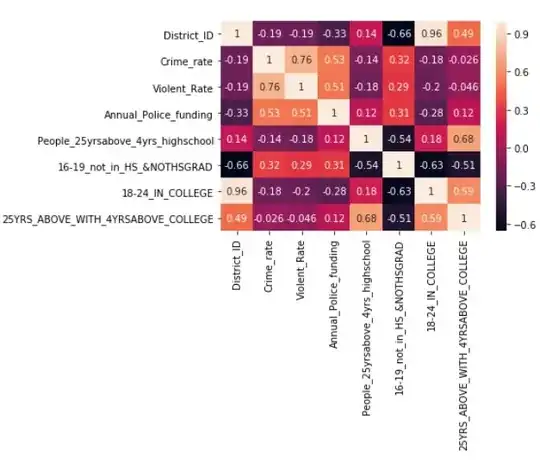I have a dataset which has the following two tables which look like the following:
District ID Crime Rate Violent Crime Rate Annual Police Funding
97 437 148 36
96 819 369 30
83 799 693 35
81 548 226 31
74 432 98 23
71 989 1375 22
68 494 213 32
and
District ID % of People 25 Years+ with 4 or more Years of High School % of 16 to 19 year-olds not in highschool and not highschool graduates % of 18 to 24 year-olds in college % of people 25 years+ with at least 4 years of college
1 69 23 7 12
2 80 10 7 15
3 77 8 7 12
4 57 11 7 17
5 72 22 8 26
6 55 5 9 29
The problem states: 2. How big of a role does police funding play in reduction of crime compared to other demographic factors? Do they overlap?
I started with correlating all attributes and don't see significant correlation of crime rate with the police funding.  .
.
What other statistical tests can be performed to come to good conclusions?